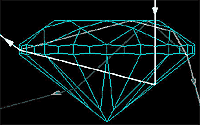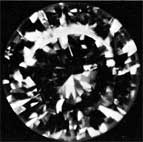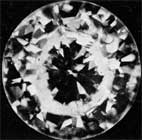How Are Diamonds Made? Natural vs Lab-Created Explained
Two Paths, One Diamond Not all diamonds come from the same place — but they all start the same way. Pure carbon, crystalized under immense pressure and heat. Whether it…
Holloway Cut Adviser takes fish-eye into account. Fish-eyes occur between the following pavilion depths and table sizes:
41 degree pavilion and 72.2% table
39 degree pavilion and 58.4% table
Diamonds with these proportions show fish-eyes that require no tilt to see them. If the table gets 1% bigger you see a 1% more fish-eye.
We down grade fish-eyes in value, a bit like an inclusion, because that is what they look like.
HCA will give “do not buy this diamond under any circumstances as it is a fish-eye” comment if the fish-eye is very bad.
A small amount of tilt to see a fish-eye is acceptable because these diamonds have a very good spread and look very big for the money. If the fish-eye can only be seen with 5 degrees or more tilt then we consider the diamond to be ideal.

Fish-eye cut ray path


Fish-eye examples
Diamond Grading ABC
V Pagel-Theisen